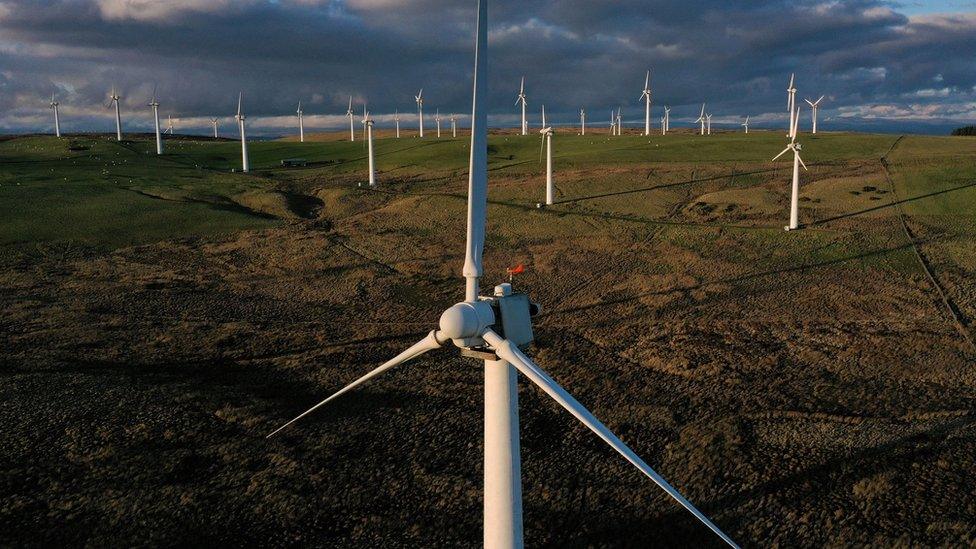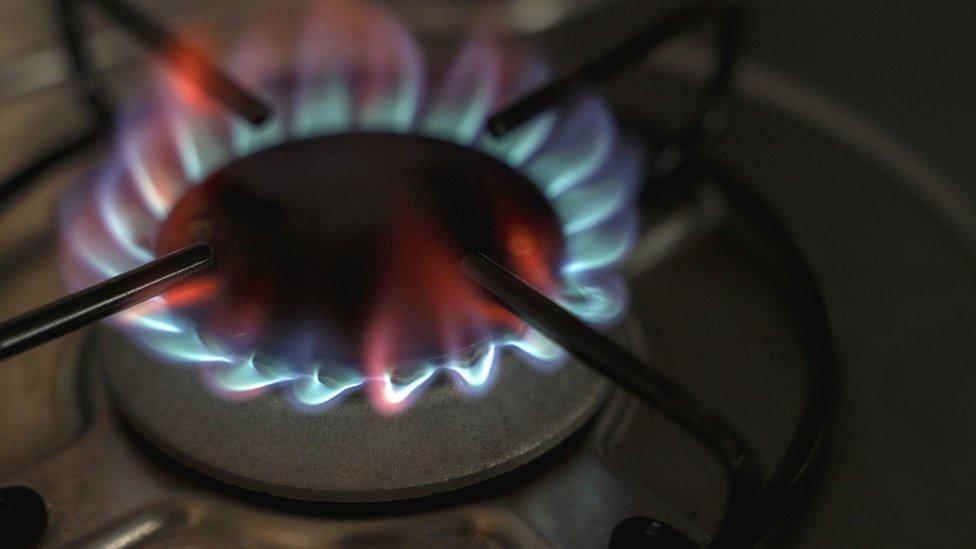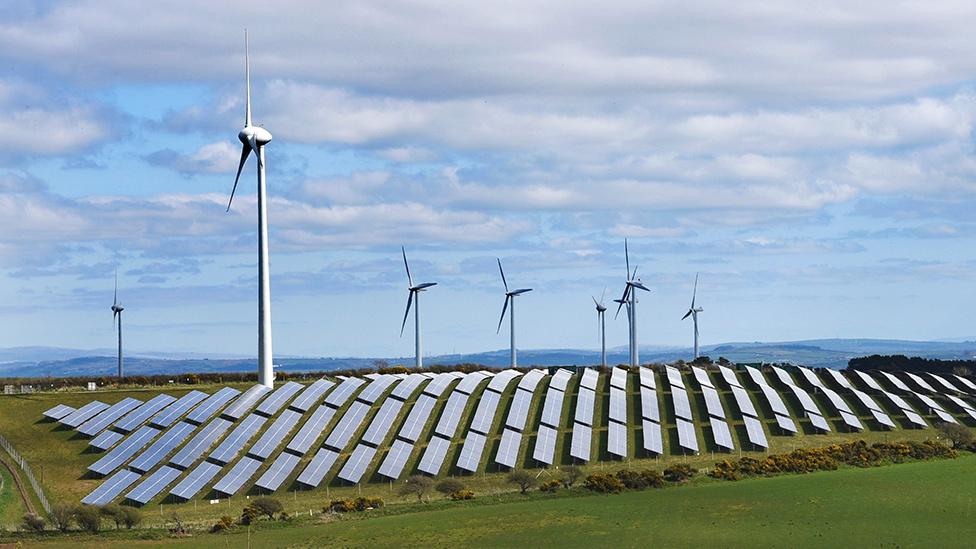Wind is main source of electricity in UK for first time
- Published
- comments

Wind turbines have generated more electricity than gas in the UK for the first time.
A third of the country's electricity came from wind farms between January and March this year, research from Imperial College London has shown.
"There are still many hurdles to reaching a completely fossil fuel-free grid, but wind out-supplying gas for the first time is a genuine milestone event," said Iain Staffell, energy researcher at Imperial College and lead author of the report.
How do wind farms work?
You might have seen a wind farm before - it's essentially a large group of wind turbines!
Wind turbines are large columns, with a set of blades at the top. These blades are the start of what helps turn the energy from the wind, into electricity for us to use.
When the wind blows, it turns the blades on the top of the turbine. These blades moving produce kinetic energy.
The kinetic energy powers a shaft in the nacelle - which is just behind the blades.
A generator in the nacelle then turns the kinetic energy into electrical energy.
Most of the UK's wind power has come from offshore wind farms, which are huge turbines out at sea.
National Grid, which is operates the UK's electricity supply, also said a record amount of solar energy was produced in April.
Bio energy and nuclear are also important generators of electricity.
Where does the UK get its energy from?

Gas is still used for things like heating and cooking
In 2010, the UK made more than three-quarters of its power from fossil fuels, mostly gas and coal, and just a small fraction - 7% in 2010 - from renewable energy.
In 2022, 40.8% of electricity made in the UK came from fossil fuels and 56% from other sources - including 41.4% from renewables and 14.6% from nuclear.
Electricity makes up only a small amount of the UK's power needs, with things like manufacturing, transport and heating still relying on fossil fuels.
And in 2022, the UK imported about 37% of its energy, mainly in the form of oil and gas.
How will the UK reach net zero?

Scientists say the world needs to cut its use of fossil fuels to try and limit the impacts of climate change.
The government wants to achieve net zero emissions by 2050.
To reach that goal it has said that all electricity should be generated from "clean" sources by 2035. That means not from fossil fuels like gas and oil.
The majority of UK homes use gas heating and the government has said it wants to ban the sale of gas boilers by 2035.
Instead it wants people to replace their boilers with alternative sources like heat pumps.
The sale of new petrol and diesel cars is to be banned from 2030.
Hydrogen, carbon capture and nuclear are other ways it hopes to meet this target.
Although solar and wind power have both increased considerably in the last few years, the move to fully renewable has had some delays.
Planning laws meant there were restrictions to building new wind farms.
In December 2022 the government announced it would be relaxing laws on building onshore windfarms in England.
A BBC report this week also found that some new solar and wind sites have had to wait up to 10-15 years because there isn't enough room on the electricity system known as 'the grid'.
